It’s A Gas: BKLYN Clay Brings First Community Gas Kiln To Potters in Brooklyn
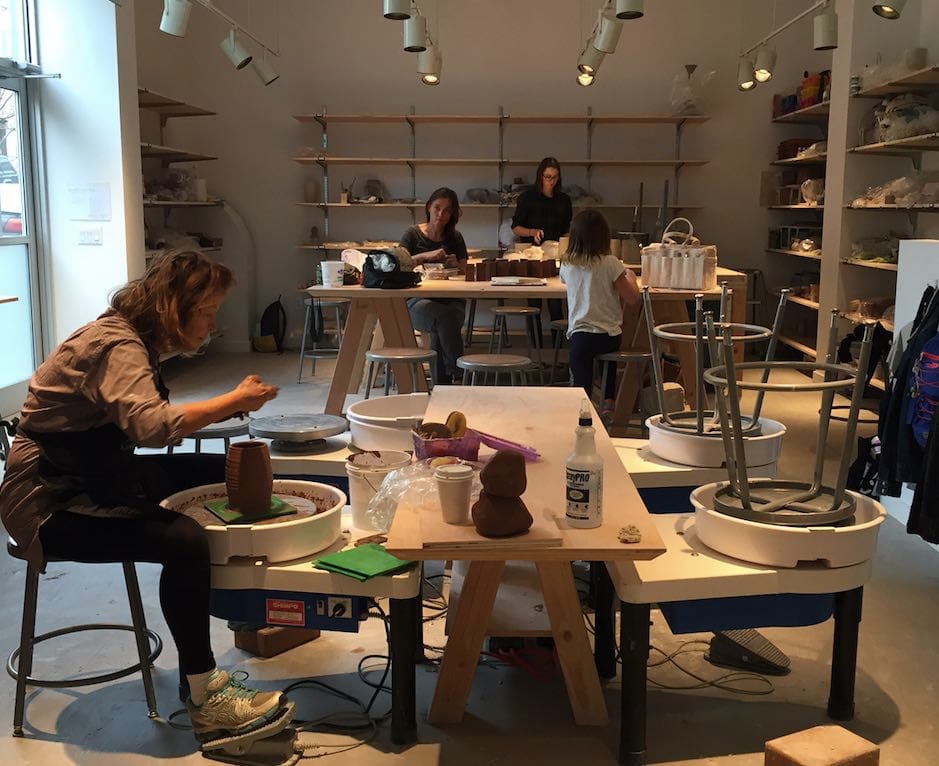

Bklyn Clay (673 5th Avenue at 20th Street) is a new community art space and ceramics studio for potters, artists, hobbyists, and production clayworkers, offering classes for all ages and levels, 24/7 access for members, workshops with artists from around the world, artist exhibitions, and the first community gas kiln in Brooklyn.
Co-founded by Jennifer Waverek and Cor Garcia-Held, Bklyn Clay officially opened for classes on September 26. Waverek met with BKLYNER to talk about the studio and patiently explain the basics of pottery.
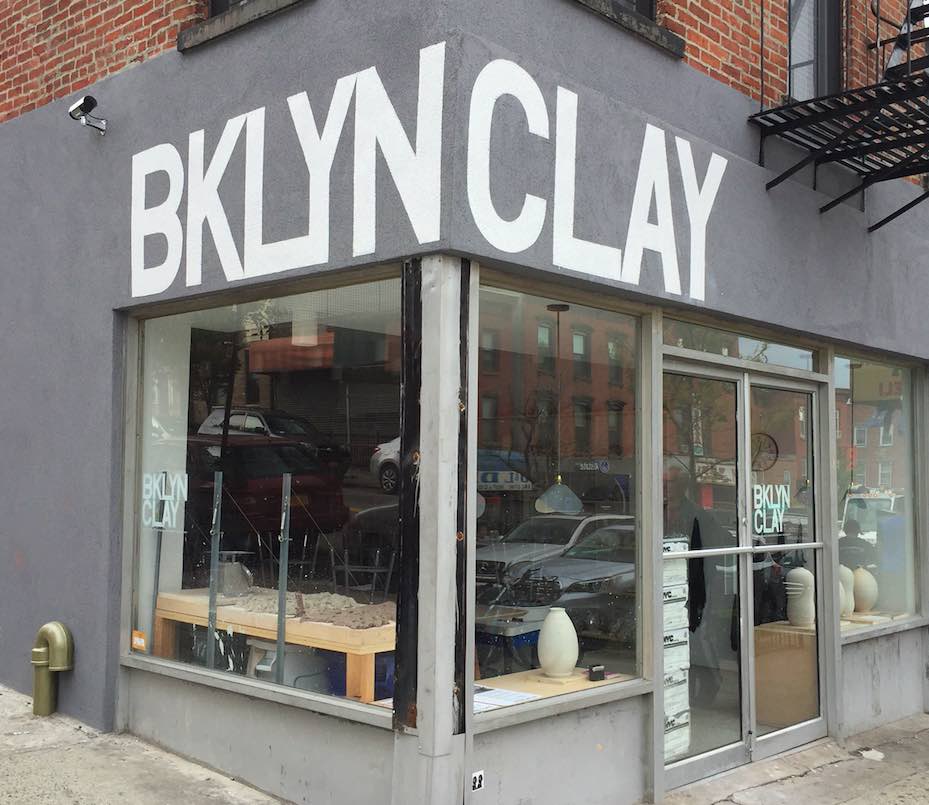
After a long search for the right space, the business partners decided on the South Slope/Greenwood Heights vicinity because of the lack of any ceramics studios there—it was a “ceramics desert,” she says. After finding the prime corner storefront on 5th Avenue and 20th Street, Waverek and Garcia-Held worked with an architect friend to design the raw space.
“We really wanted a space where we could have both classroom and membership space – really so people would always have a space to work,” Waverek explains. “We were fortunate to be able to come into this and set it up how we wanted it from the start,” she says of the two-floor, 2,500-square-foot studio.
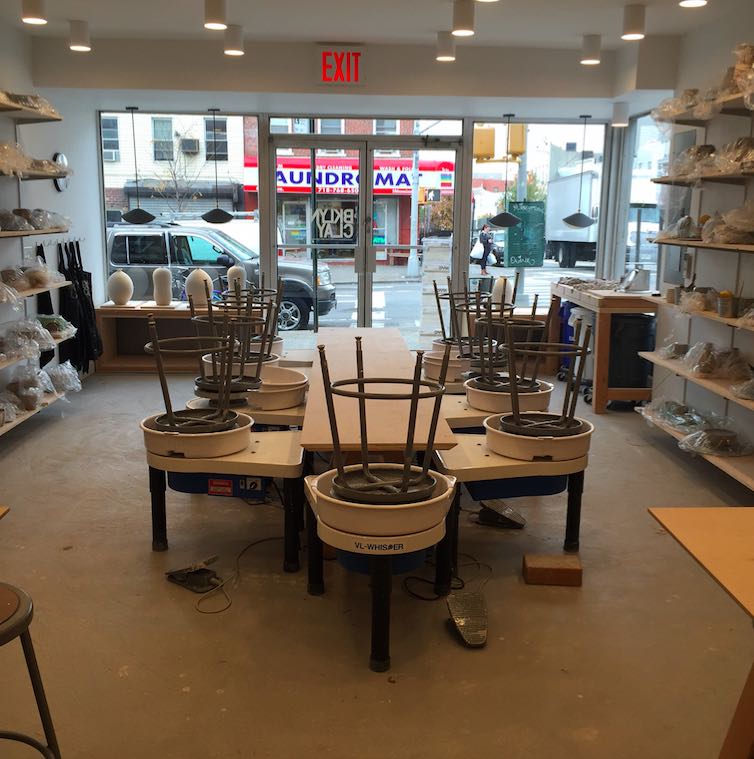
The beautifully minimal and sunny space is divided into two sections. Classes are offered in wheel throwing and hand-building in the front, while a studio for members is located through an arched doorway and up a few stairs in the back. Members are given private shelf space as well as a personal passcode to enter the studio through a side door on 20th Street, providing them 24/7 access and the flexibility to work and practice their skills whenever they want in a fully equipped studio.
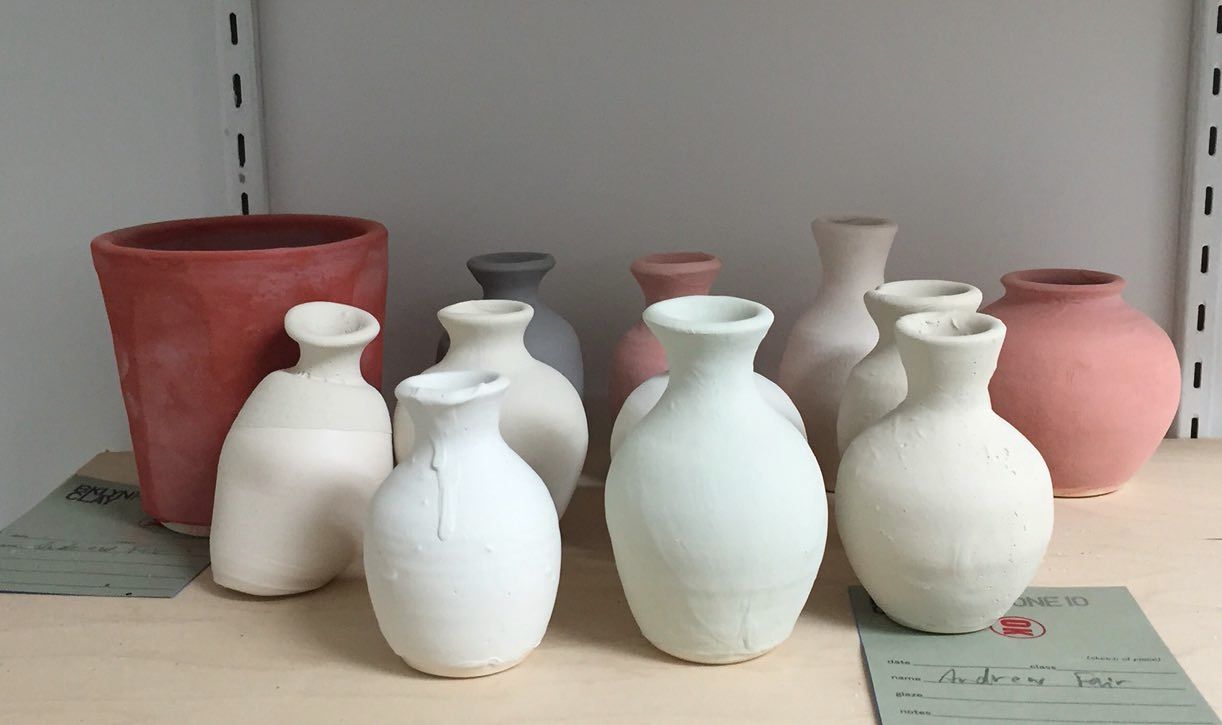
Along with three electric kilns, which most ceramics studios have, Bklyn Clay offer a custom-built Bailey gas kiln—“the heart of the studio,” as Waverek describes it. Gas kilns reduce the amount of oxygen during firing, creating deeper colors and a one-of-a-kind effect for glazes.
Tiny speckles or “interesting irregularities” appear randomly on the surface of pottery fired in gas kilns, creating a unique and organic look. According to Waverek, there are no community gas kilns available anywhere in Brooklyn, and only two in Manhattan, so having one and sharing it is “a real attraction and defines us in a really different way.”
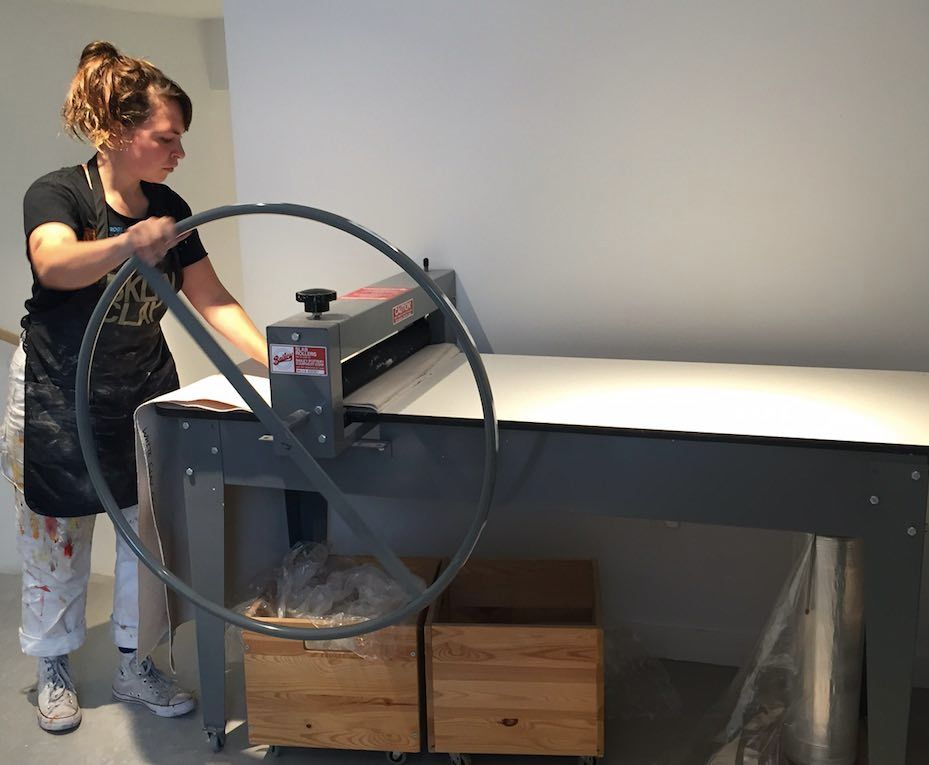
While Bklyn Clay’s gas kiln is hooked up, properly vented, and ready to go, it will have to wait another week or two to be fired up as the studio’s water main needs to be widened to create the appropriate amount of water pressure for the sprinkler system—a requirement for having a gas kiln. Once the water main is fixed and the gas company has inspected and approved, the gas kiln will be ready to fire and glaze away.
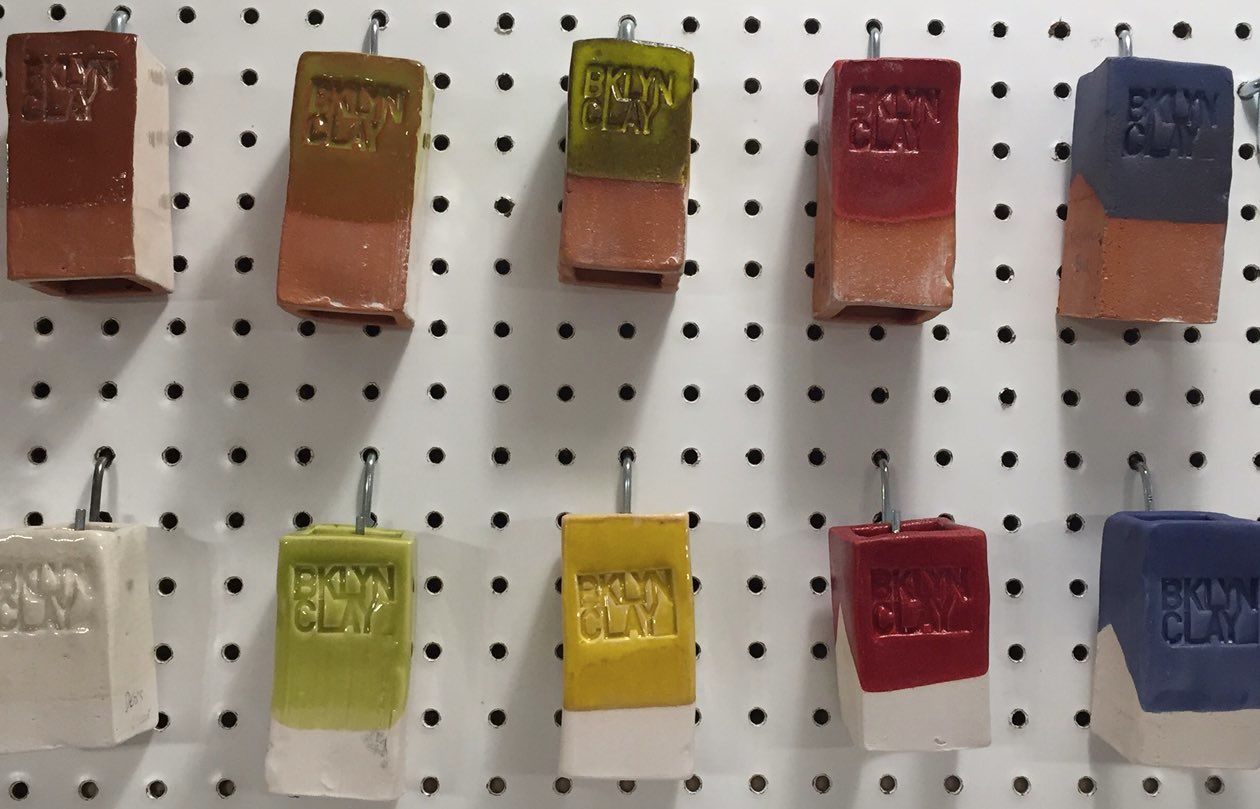
Along with the gas kiln, Waverek says another way Bklyn Clay sets itself apart from other studios is Garcia-Held’s “researching the minerals and chemicals used for glazes and coming up with recipes” to create “modern colors” and fresh options for their students and members. This ingenuity and innovation “makes our studio distinctive.” Garcia-Held is a former art therapist who studied ceramics and has about 12 years of experience in the craft.
Originally from Montana, Waverek moved to New York and designed graphics for fashion and beauty advertising for several years before going back to school and earning her BFA in Art History and Visual Arts from Columbia. She met Garcia-Held while taking a ceramics class about 4 years ago.
“When I went back to school for visual arts I was really hoping to push my life in that direction more,” so her opening a ceramics studio and community art center “came about fairly organically,” and “it just so happens that there was a real need for a place like this.” After just over a month, the studio already has about 40 members.
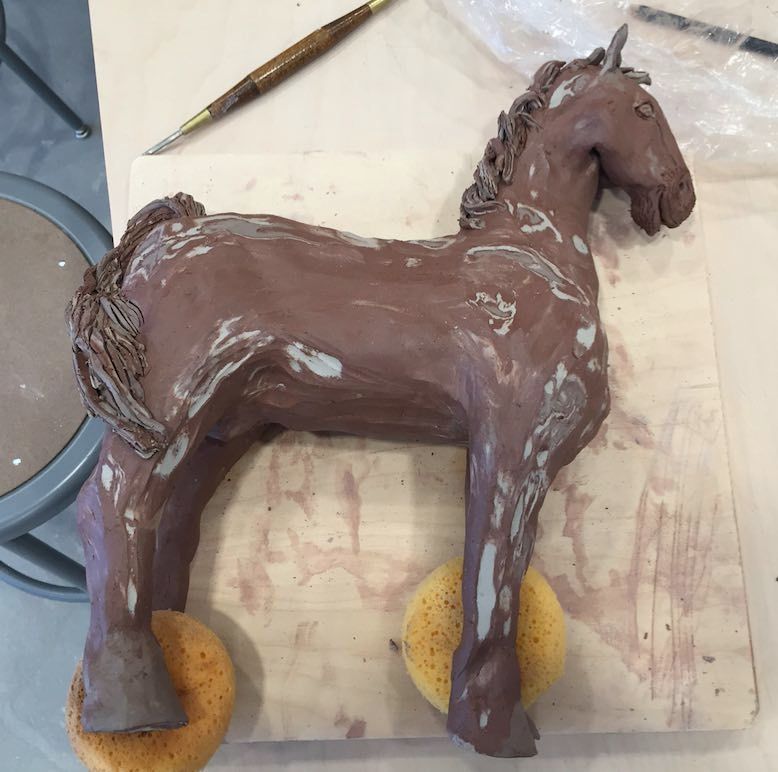
With people traveling from Crown Heights, Prospect Heights, Sunset Park, and Bay Ridge to come to the studio, Waverek says, “People are really happy to have a resource closer to where they’re living.” Both she and Garcia-Held also happen to live nearby.
She adds when opening Bklyn Clay, she did not anticipate how much people would welcome their presence in the neighborhood, “Working in advertising, you’re not really bringing anything to the community in a valuable way, but people have been really appreciative… It’s really a community place.”
Waverek talked us through the “very process oriented” steps of ceramics and explained the difference between wheel throwing and hand-building.
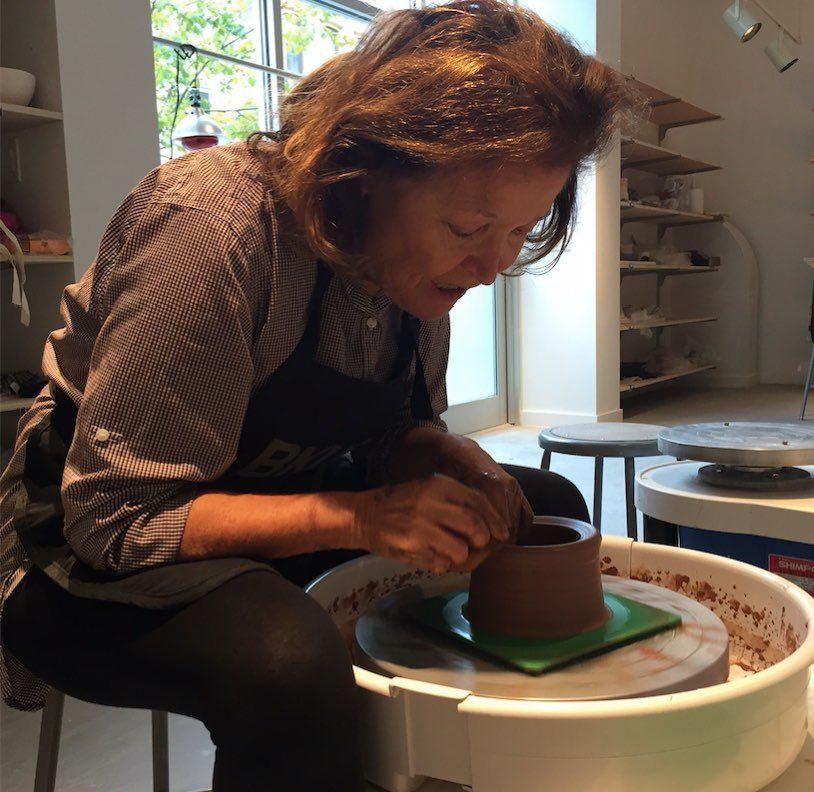
Wheel throwing is probably the first impression people get when thinking of pottery—like in the famous scene from the movie Ghost. Bklyn Clay currently has nine wheels for classes (eight for students and one for the instructor) and hopes to add 2 more for their next semester, which begins in January. The wheel allows you to throw cylindrical shapes.
Hand-building requires different tools, like a slab roller or an extruder, and does not use the wheel at all. Potters create shapes with their hands from a flat slab of clay. The slab roller flattens clay bodies allowing the user to select the thickness of the clay.
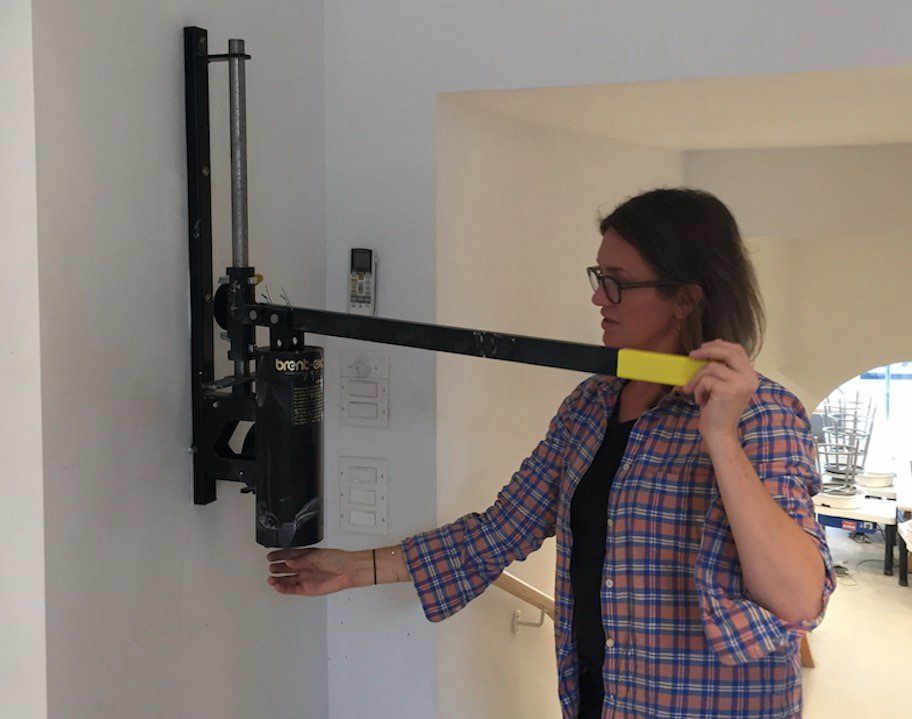
The extruder is a wall-mounted pump that works a lot like a Play-Doh Fun Factory set. You select your shape (a cookie-cutter like piece), feed the clay into the top of the machine, pull down the huge lever, and your shaped clay is extracted from the bottom.
Bklyn Clay offers classes in wheel throwing and hand-building as well as a mixed discipline option which combines the two techniques. Waverek and Garcia-Held decided to schedule their classes in 12-week sessions because there are many steps and a lot of waiting periods involved in the lengthy ceramics process. She summarizes, “You make something – give that a week or two. Then you have to dry it, bisque it (hardening the piece in a kiln so it is safe for glazing), give that another week. Once that comes out, you have to glaze it,” and fire it again.
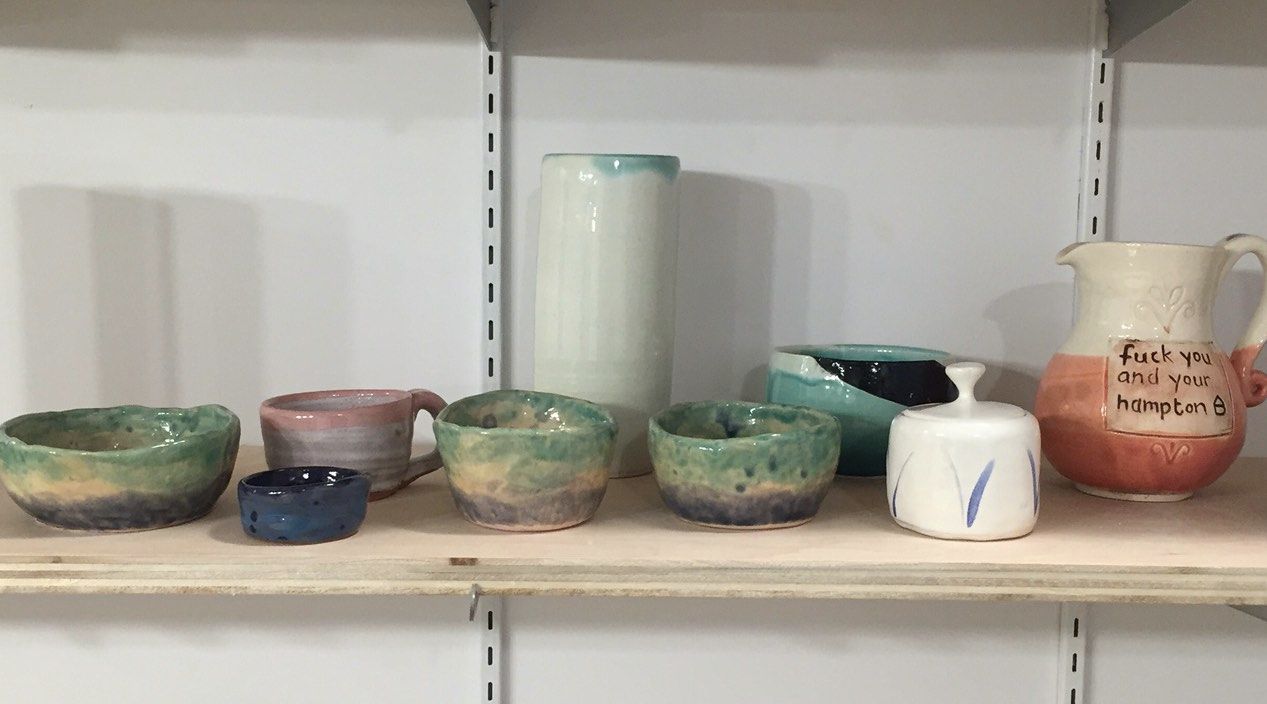
Since the studio is situated in a corner storefront, many people walk by and want to give the wheel a try but are hesitant to commit to 12 weeks of classes. On Friday nights, the curious can RSVP for a Tryday Night class, a 2-hour session that gives students “a feel for the wheel.” Tryday Nights are available in adult and kids sessions on alternating weeks. Waverek says they decided to offer this to “give the community an opportunity” to try pottery “without having to spend or commit.”
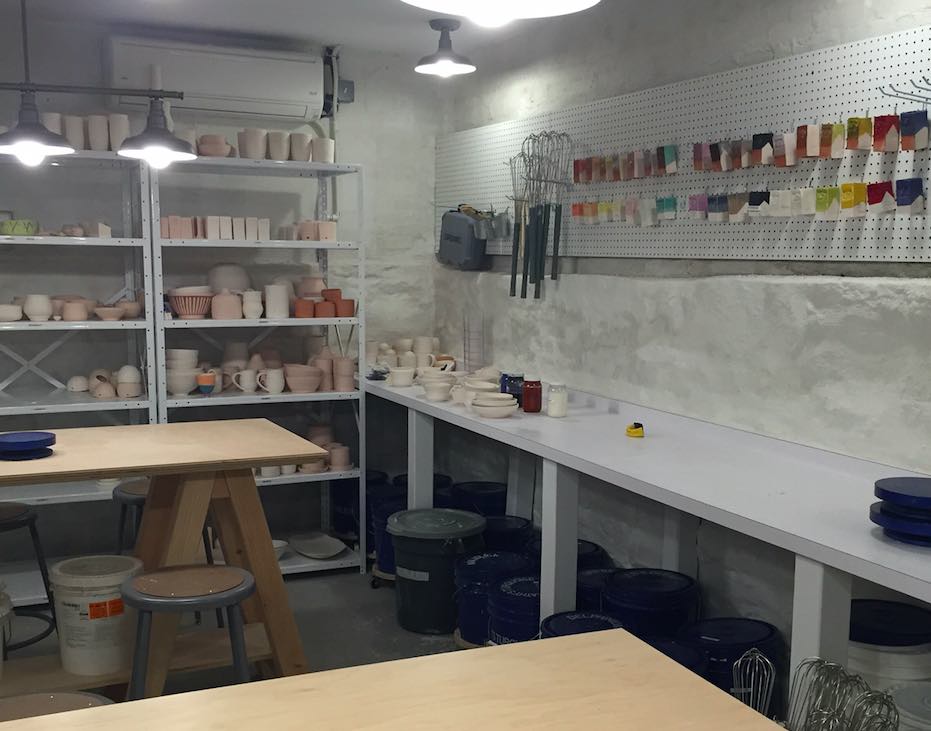
Need a reason to give pottery a try yourself? According to Waverek, it can be therapeutic. “Clay can really absorb emotion and aggression. It’s a really great stress reliever.” Along with decompressing at Bklyn Clay, you can learn a new skill, make some cool things, meet interesting people, and be a part of a fun and creative community. Winter session classes begin January 9 and registration opens December 6.
The Business Rundown: BKLYN Clay
Where: 673 5th Avenue at 20th Street
When: Times vary based on the class schedule. View all information about scheduling here.
Details: Membership information is located here. Contact jen@bklynclay.com.




